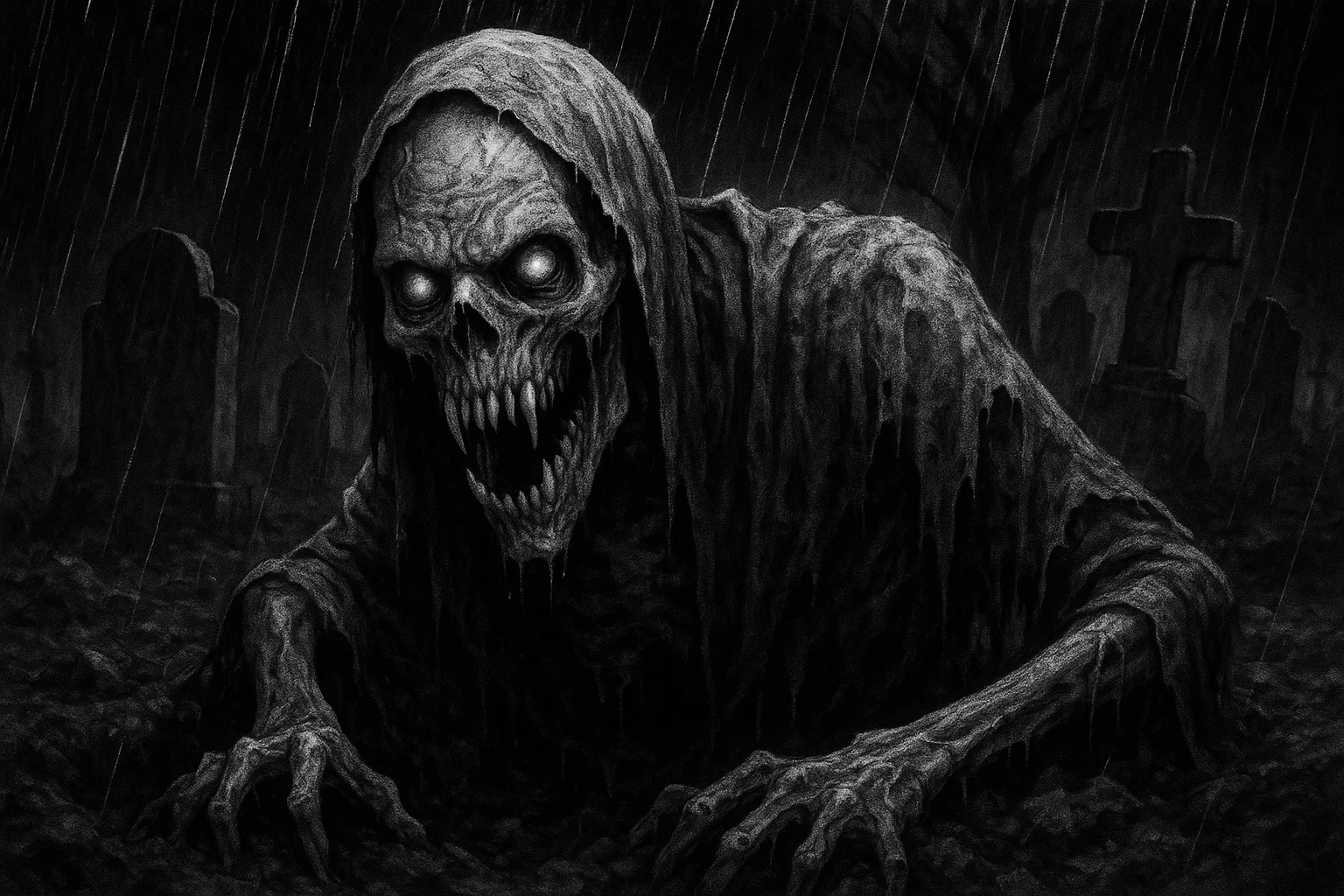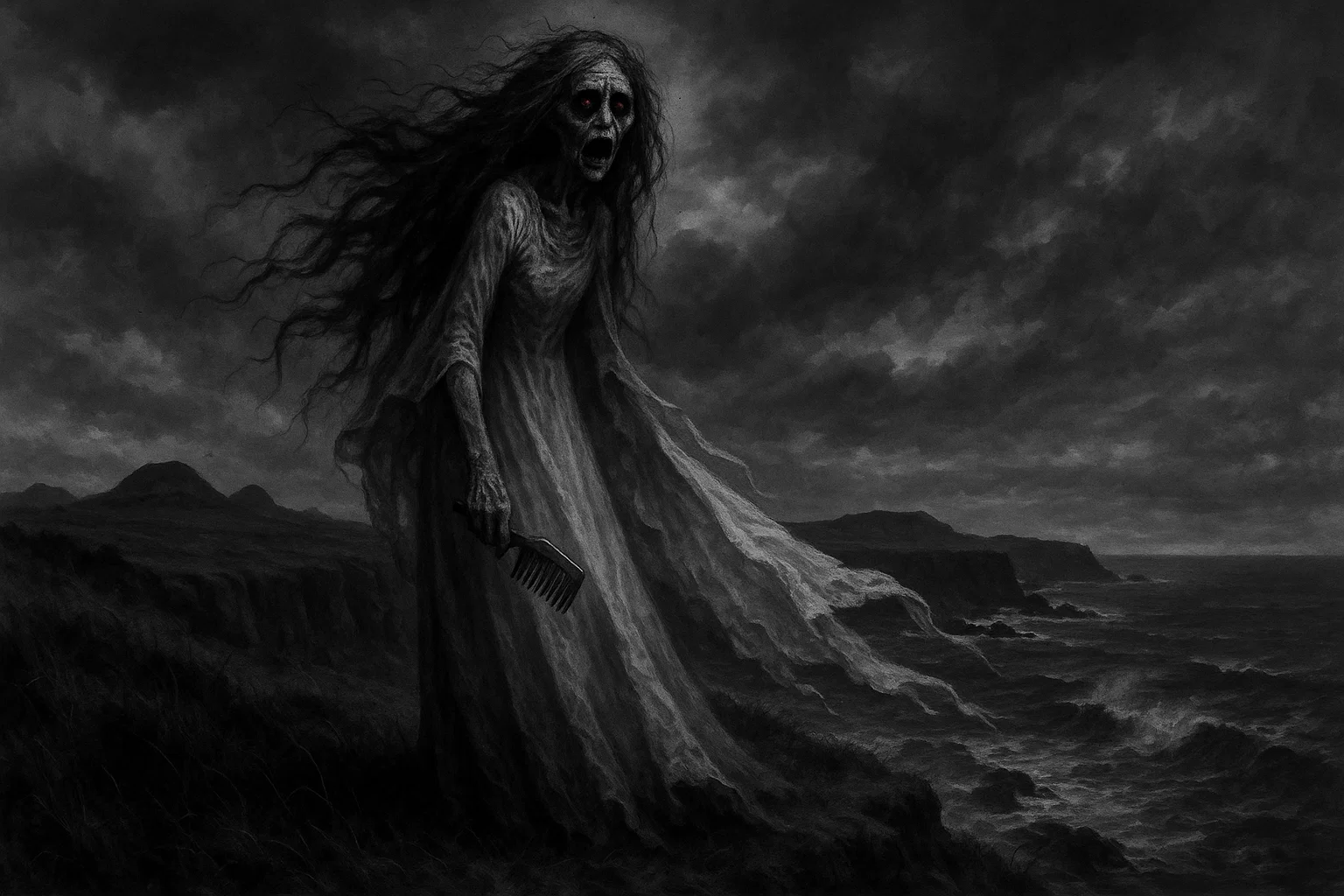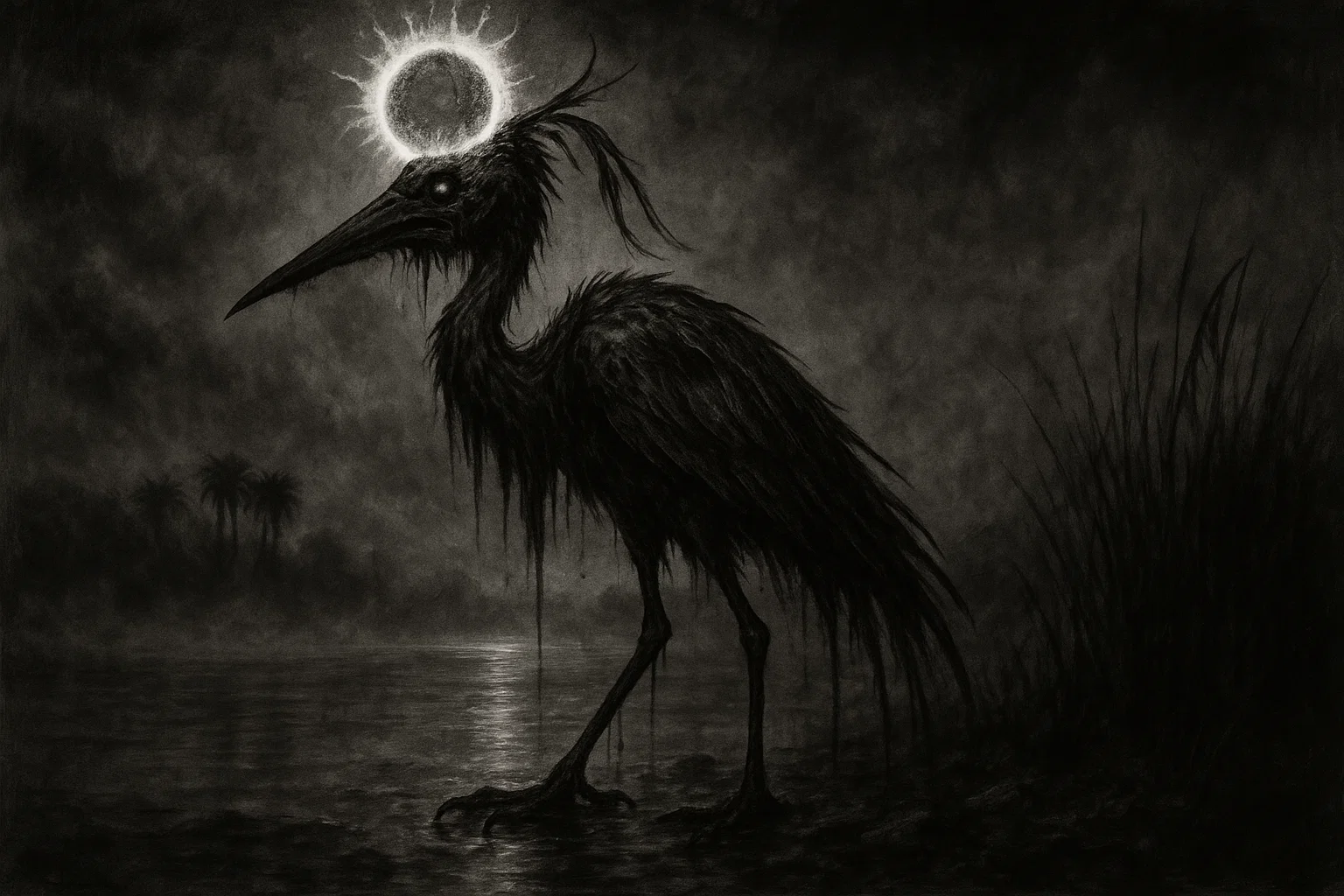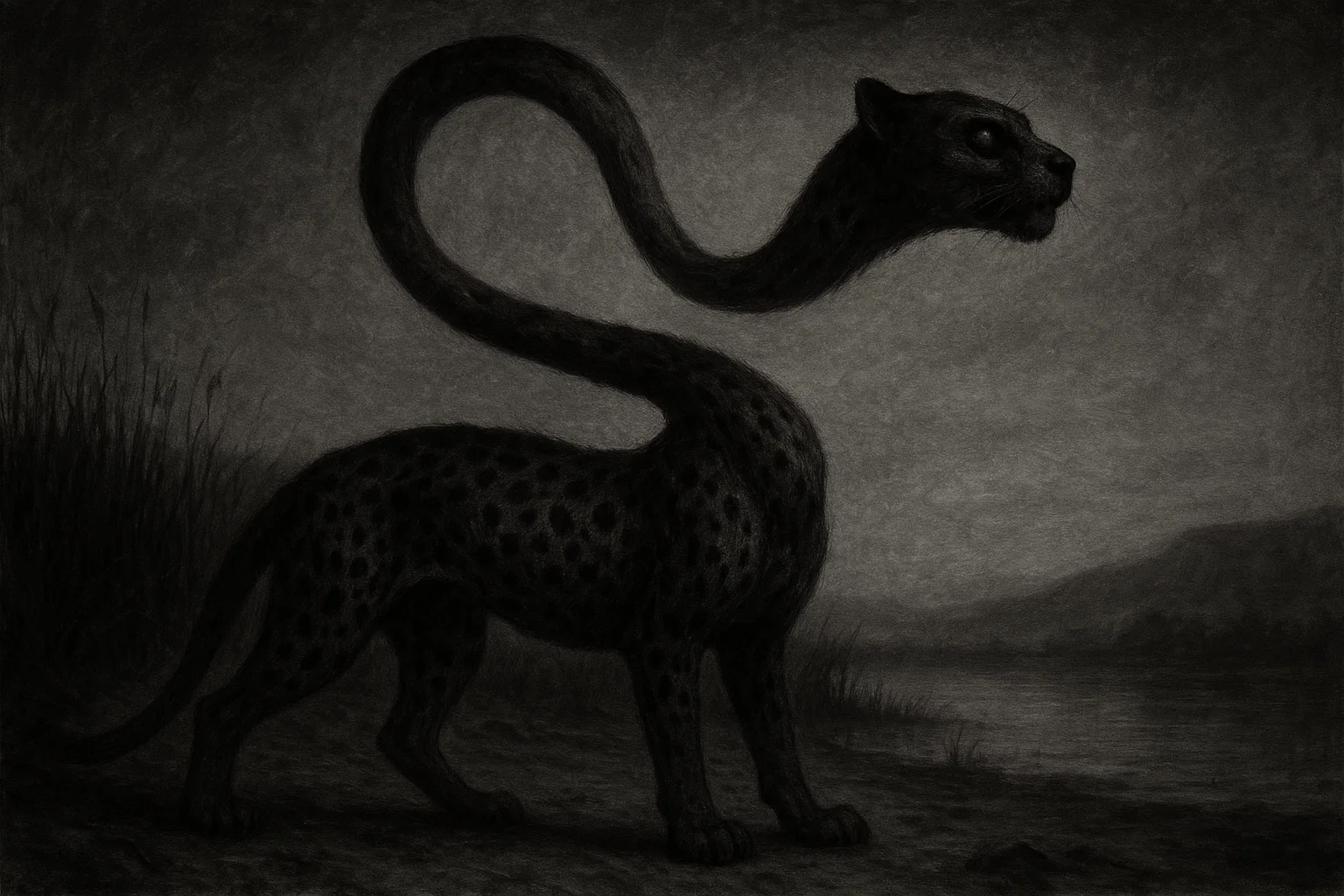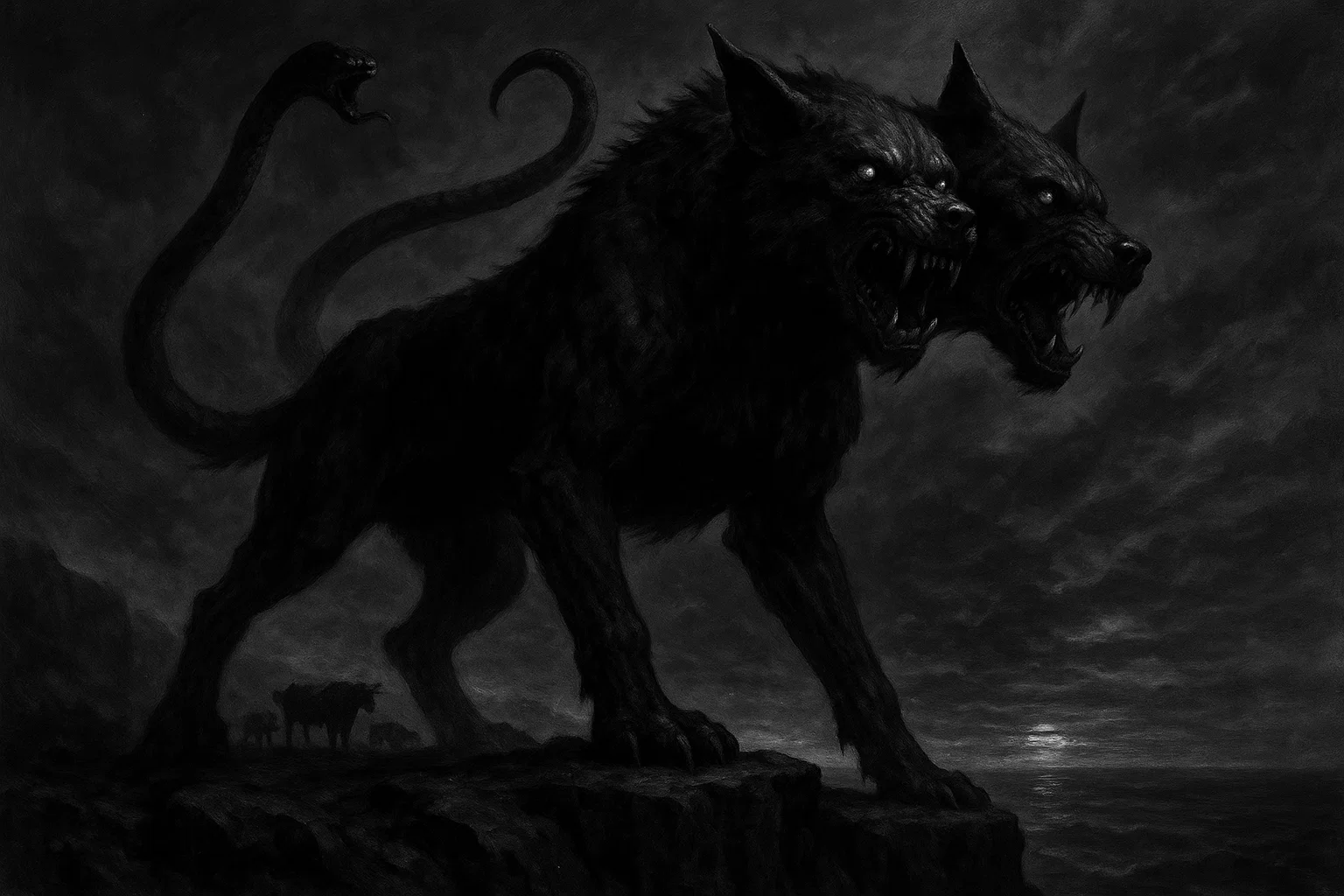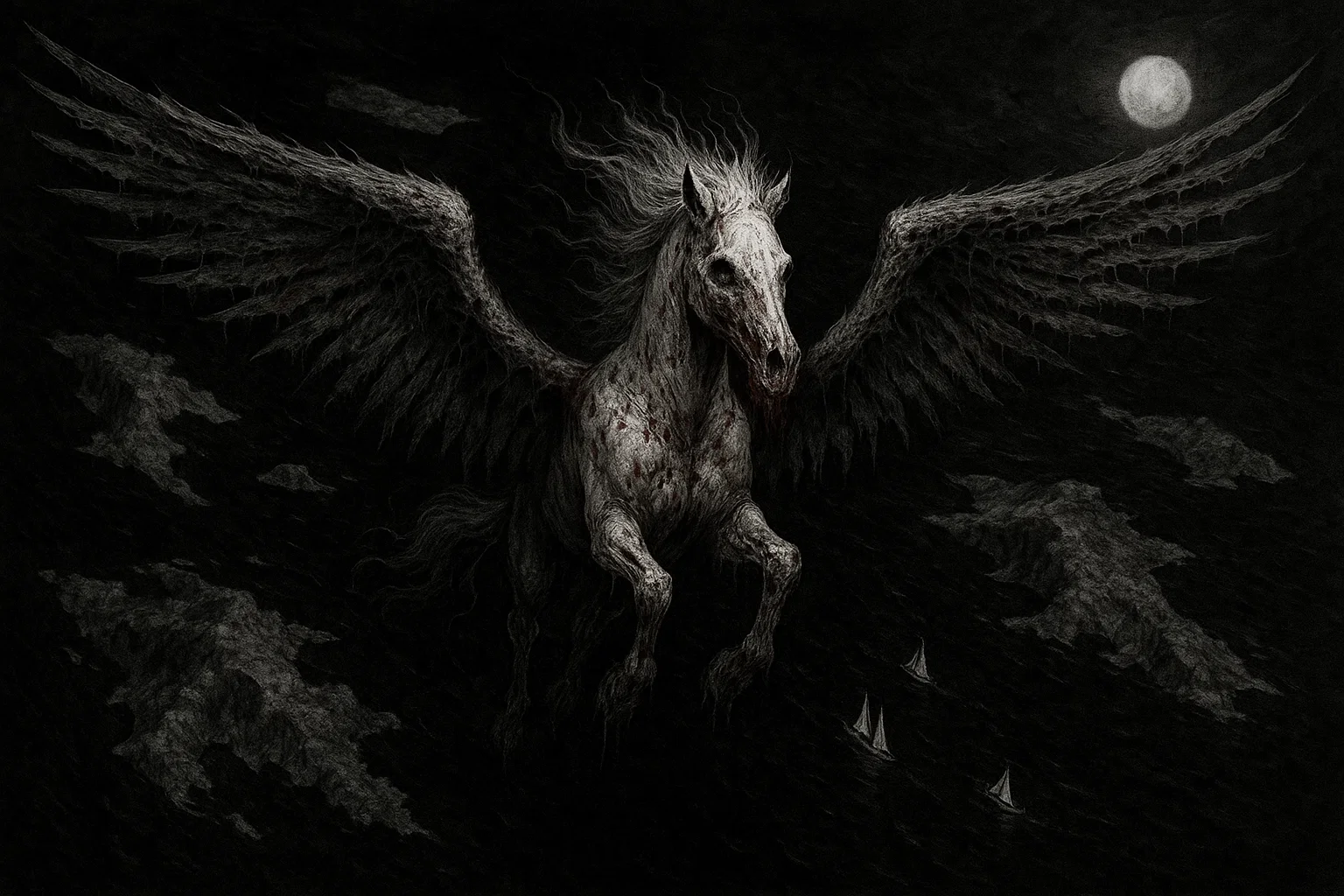In the eerie shadows of Slavic folklore, where tales of the undead weave dread into the fabric of village life, the Vourdalak stands as a chilling embodiment of horror.
This Slavic vampire, hailing from the ancient traditions of Russia, Serbia, and Bulgaria, is no ordinary bloodsucker.
Unlike the charming vampires of modern tales, the Vourdalak is a grotesque revenant that preys solely on its own kin, turning familial love into a nightmare of betrayal and malediction.
Its legend, steeped in gothic horror, has haunted generations, from 19th-century literature to chilling oral stories passed down by firelight.
Summary
Overview
| Trait | Details |
|---|---|
| Names | Vourdalak, Wurdulac, Vurdulak, Verdilak; from volkodlak (wolf-fur). |
| Nature | Undead Slavic vampire, a maledict risen from cursed graves. |
| Species | Humanoid |
| Appearance | Jagged teeth, hollow eyes, shriveled or ruddy skin, ghastly corpse. |
| Area | Haunts Russia, Serbia, Bulgaria, Montenegro villages. |
| Behavior | Kin-slayer, preys on family, turns kin into nocturnal Vourdalaks. |
| Creation | Rises from suicide, violent death, or excommunication. |
| Weaknesses | Aspen stake, garlic, holy water, silver crosses, burning. |
| First Known | Mentioned in 1836 by Alexander Pushkin in “Wurdulac” poem. |
| Strengths | Superhuman strength, can overpower victims; mesmerizing gaze induces trance. |
| Lifespan | Immortal unless destroyed; persists as undead for centuries. |
| Time Active | Strictly nocturnal, avoids sunlight to preserve cursed form. |
| Myth Origin | Rooted in pre-Christian Slavic beliefs about restless spirits. |
| Associated Creatures | Linked to upir, rusalka in Slavic undead lore. |
What Is the Vourdalak?
The Vourdalak is a vampiric creature rooted in the folklore of Eastern Europe, particularly in Slavic regions like Russia, Serbia, Montenegro, and Bulgaria.
Unlike the suave, aristocratic vampires of Western stories, this undead monster is a cadaverous horror, driven by an insatiable thirst for the blood of its own family.
Its defining trait—attacking those it once loved—sets it apart from other vampire myths, making it a symbol of familial treachery and the perversion of sacred bonds.
The Vourdalak is often described as a reanimated corpse, rising from the grave due to improper burial, curses, or unholy rites. Its presence in Slavic vampire folklore reflects deep-seated fears of death, dishonor, and the restless dead, making it a uniquely terrifying figure in supernatural lore.
In Slavic traditions, the Vourdalak is believed to emerge from those who died under specific circumstances, such as suicide, violent death, or excommunication from the church.
Once risen, it seeks out its kin, spreading death and transforming loved ones into similar abominations. This cycle of destruction amplifies its horror, as it not only kills but also corrupts the very essence of family.
The Vourdalak’s legend serves as a grim warning about the importance of proper burial practices and the dangers of defying cultural or religious norms.
You May Also Like: Murmur, Duke of Hell: The Demon Who Commands the Dead
Etymology
The term Vourdalak carries a rich linguistic history, deeply intertwined with Slavic mythology and its complex interplay of vampire and werewolf lore.
The name likely derives from the Slavic word volkodlak, meaning “wolf-fur” or “wolf-hide,” a term originally associated with werewolves but later applied to vampiric creatures.
This etymological connection reflects the fluidity of monstrous identities in Slavic folklore, where the boundaries between lycanthropy and vampirism often blur. The root volk (wolf) and dlak (hair or fur) suggest a creature tied to transformation, savagery, and the supernatural, evoking images of a beastly, predatory being.
The Vourdalak’s name also shares roots with similar terms across Eastern Europe. In Serbian, the term vukodlak refers to a werewolf-like creature that can become vampiric, while in Bulgarian, vrkolak denotes a similar undead entity.
The Greek vrykolakas, a vampiric creature tied to improper burial, and the Romanian Vârcolac, a hybrid of vampire and werewolf, further illustrate this linguistic crossover. These connections suggest a shared Balkan folklore tradition, where myths of the undead spread across regions like Serbia, Macedonia, and Romania during the medieval period.
The term Vourdalak entered literary prominence in Russia through Alexander Pushkin’s 1836 poem “Wurdulac,” part of his Songs of the Western Slavs, written on August 15, 1836, and inspired by earlier myths.
Scholars suggest Pushkin may have drawn from Lord Byron’s 1813 poem The Giaour, which mentions “Vardoulacha,” a variant of vrykolakas.
Aleksey Konstantinovich Tolstoy’s 1839 novella, written in French on March 22, 1839, and later translated into Russian in 1884, solidified the term’s association with vampires.
Variations of the name—Wurdulac, Wurdalak, Verdilak, and Vurdulak—reflect regional pronunciations and transliterations, with Vourdalak (pronounced voor-dah-lak, emphasis on the second syllable) becoming the standard in Russian and Serbian contexts.
The name’s evolution from werewolf to vampire reflects Slavic beliefs about the restless dead, where those who died unnaturally could return as monstrous hybrids.
In some regions, the Vourdalak was linked to necromancy or curses, with names like upir (Russian vampire) or moroi (Romanian vampire) used interchangeably. The term’s versatility underscores its role as a bridge between different types of supernatural beings, embodying fears of transformation, betrayal, and the unclean dead.
What Does the Vourdalak Look Like?
The Vourdalak is a grotesque figure, far removed from the seductive allure of modern vampires.
In Slavic folklore, it is described as a skeletal corpse with a ghastly pallor, sunken cheeks, and hollow eyes that glow faintly in the dark. Its large, jagged teeth protrude from a distended mouth, and its emaciated frame is often shrouded in tattered burial clothes, giving it a wraithlike appearance.
Some accounts describe a ruddy complexion, a sign of blood consumption, contrasting with its otherwise cadaverous form. Unlike the polished elegance of Western vampires, the Vourdalak’s horrifying visage—sometimes with a sinewy neck or claw-like hands—evokes visceral fear, emphasizing its role as a harbinger of doom.
In certain tales, the Vourdalak moves with an unnatural, jerky gait, its body stiff from rigor mortis yet animated by malevolent energy. Its eyes are said to mesmerize victims, inducing a trance-like state that facilitates its attacks.
The creature’s appearance varies slightly by region: in Serbian lore, it may have a bloated, purplish hue, while Bulgarian tales describe a shriveled, leathery look. These descriptions align with Slavic beliefs about the unclean dead, whose bodies decay unnaturally due to their cursed existence.
You May Also Like: The 1986 Kobe Middle School Murders | Horror Story
Vourdalak Legends
The Vourdalak is central to several chilling legends in Slavic folklore, each rooted in local oral traditions and village storytelling. These tales, passed down through generations, emphasize the creature’s terrifying connection to family and community, often serving as warnings about proper burial and spiritual purity.
Below are detailed accounts of the most prominent Vourdalak legends, drawn from Serbian, Bulgarian, and Russian traditions.
The Family of the Vourdalak
The most famous Vourdalak legend is Aleksey Konstantinovich Tolstoy’s novella, written on March 22, 1839, and set in 18th-century Serbia.
A French diplomat, Marquis d’Urfé, seeks refuge with a peasant family awaiting their patriarch, Gorcha, who left to hunt bandits. Gorcha warns that if he does not return within ten days, he will have become a Vourdalak and must be killed with an aspen stake.
On the tenth day, at precisely 8 p.m. on June 12, 1765, Gorcha returns, claiming to have been delayed. His family—sons Jegor and Pierre, daughter Sdenka, and grandson Vlad—notice his strange behavior: he avoids food, shuns sunlight, and stares with ghoulish eyes.
As days pass, Vlad is found dead with bite marks on his neck, and Sdenka falls into a trance-like state. Jegor dismisses Vourdalak fears as superstition, but Pierre discovers Gorcha’s coffin empty at night.
The family’s denial crumbles when Gorcha attacks, revealing his vampiric nature. The story ends with the family’s destruction, as Sdenka and others become Vourdalaks, leaving d’Urfé to flee in horror. This tale, rooted in Serbian oral traditions, reflects village fears of familial curses and the importance of vigilance against the undead.
The Cursed Bride of Vojvodina
A lesser-known Serbian legend from the Vojvodina region, dating to the early 1700s, tells of a young bride named Milena, who died of fever on her wedding day in 1718.
Buried without proper Orthodox rites due to a village dispute, she returned as a Vourdalak on the night of October 3, 1718. Her husband, Dragan, awoke to find her standing over him, her pale, withered face illuminated by moonlight.
She drained his blood, and over weeks, her siblings and parents perished, each found with puncture wounds on their throats. Villagers, led by a priest named Father Stefan, exhumed Milena’s body, finding it bloated and blood-filled. They staked and burned her corpse, ending the curse.
This story emphasizes the Vourdalak’s connection to improper burial and the tragedy of lost love.
The Vampire of Tarnovo
In Bulgarian folklore, a legend from the Tarnovo region, circa 1750, describes a farmer named Dimitar, who committed suicide after a failed harvest on September 17, 1749.
Excommunicated by the church, he rose as a Vourdalak, haunting his village near Veliko Tarnovo. His first victim was his wife, Elena, found dead with bite marks on her neck.
Dimitar’s ghastly form—shriveled skin, glowing eyes, and a fetid stench—terrorized the village for months. A group of villagers, armed with holy icons and garlic, tracked him to a cave, where they drove a hawthorn stake through his heart on December 5, 1749.
This tale highlights Bulgarian beliefs about excommunication and the restless dead, with the Vourdalak as a punishment for spiritual failure.
The Haunted Village of Kosovo
A Serbian-Montenegrin oral tradition from Kosovo, dating to the late 1600s, recounts the story of Vuk, a warrior killed in battle against the Ottomans on July 28, 1690.
Buried hastily without rites, Vuk returned as a Vourdalak, his emaciated body draped in bloodstained armor. He attacked his brothers, Marko and Lazar, and his mother, Ana, turning them into Vourdalaks. The village, led by a monk named Brother Nikola, conducted a ritual on August 15, 1690, using holy water and silver crosses to trap Vuk in his grave, where they burned his body.
This legend underscores the Vourdalak’s link to violent death and the power of religious rituals to combat the undead.
You May Also Like: Ghost Taxi Passengers of Japan: Real Hauntings After the 2011 Tsunami?
Vourdalak Mythology
The Vourdalak is a cornerstone of Slavic vampire mythology, embodying fears of the restless dead and the consequences of spiritual or cultural transgressions.
Its origins lie in pre-Christian Slavic beliefs about spirits who linger due to unresolved grievances, curses, or improper burials. With the spread of Christianity in the Balkans and Eastern Europe during the 9th–11th centuries, these beliefs merged with Christian concepts of sin and damnation, portraying Vourdalaks as souls denied salvation.
Historical events, such as the Serbian vampire panics of 1725–1732, fueled these myths, as villages attributed mysterious deaths to vampiric activity during times of plague and war.
The Vourdalak’s evolution began with oral traditions in medieval Slavic villages, where storytellers described revenants rising from graves to torment their kin.
By the 18th century, these tales were documented in historical records, such as the 1732 case of Arnond Paole, a Serbian soldier whose alleged vampirism sparked widespread fear.
The Vourdalak’s literary prominence emerged with Alexander Pushkin’s 1836 poem, written on August 15, 1836, and Aleksey Konstantinovich Tolstoy’s 1839 novella, which introduced the creature to a broader audience. These works transformed the Vourdalak from a local legend into a symbol of gothic horror, influencing later vampire fiction.
The Vourdalak’s mythology is closely tied to Slavic burial practices, which emphasized rituals to ensure the dead remained at rest. Causes of vampirism included suicide, murder, excommunication, or being born with a caul (a membrane on the head, considered a cursed sign).
The creature’s compulsion to attack family reflects the Slavic value of kinship, where betrayal by a loved one was the ultimate horror. Its connection to werewolf lore, via terms like volkodlak, suggests a historical overlap between lycanthropic and vampiric myths, with some tales describing Vourdalaks with wolf-like traits, such as furry hands or howling cries.
The Vourdalak also shares traits with other Slavic undead, such as the upir (a blood-drinking ghost) and rusalka (a vengeful water spirit). Unlike these creatures, the Vourdalak’s focus on family predation and its ghoulish appearance make it uniquely terrifying.
Its mythology has evolved through centuries, from village tales to modern horror, maintaining its core themes of death, betrayal, and the supernatural curse.
Vourdalak vs Other Monsters
The Vourdalak’s distinct traits set it apart from other vampiric creatures:
| Monster | Origin | Weaknesses | Methods of Creation | Unique Traits |
|---|---|---|---|---|
| Upyr | Russian | Sunlight, aspen stake | Suicide, witchcraft | Transforms into animals |
| Strigoi | Romanian | Garlic, silver | Seventh child, curse | Living or undead |
| Vrykolakas | Greek | Fire, decapitation | Improper burial | Causes earthquakes |
| Nosferatu | German | Sunlight, holy water | Vampire bite | Plague-carrier |
| Draugr | Norse | Fire, dismemberment | Violent death | Controls weather |
| Jiangshi | Chinese | Taoist talismans, rice | Unburied corpse | Blind, detects breath |
| Aswang | Filipino | Salt, sunlight | Hereditary curse | Detaches upper body |
| Loogaroo | Caribbean | Salt, fire | Demonic pact | Fireball form |
| Baobhan Sith | Scottish | Iron, holy ground | Fairy curse | Dances victims to death |
| Rakshasa | Hindu | Sacred weapons | Divine creation | Illusions, immortality |
| Ghoul | Middle Eastern | Fire, sunlight | Cannibalism | Graveyard dweller |
| Empusa | Greek | Iron, holy symbols | Demonic origin | Serves Hecate |
The Vourdalak’s familial predation is unique, unlike the broader hunting of Strigoi or Nosferatu.
Its skeletal, ghoulish appearance contrasts with seductive creatures like the Baobhan Sith, while its Slavic origins tie it to cultural fears of improper burial, unlike the Jiangshi’s Taoist roots. The Vourdalak’s emotional horror—turning loved ones into monsters—sets it apart, emphasizing betrayal over mere violence.
You May Also Like: Japanese Horror: The Terrifying Ghost of Aka Manto
Methods of Protection and Defeat
Protecting against or defeating a Vourdalak requires adherence to Slavic rituals rooted in both pagan and Christian traditions.
The primary method is driving an aspen stake through the heart, as aspen wood is believed to possess purifying properties in Slavic folklore. The stake must pierce the heart precisely to release the Vourdalak’s cursed soul.
Decapitation with a silver blade and burning the body are also effective, ensuring the corpse cannot rise again. Garlic, considered a protective herb, is hung on doors or worn as amulets to repel the creature, as its fetid stench is said to be repulsed by garlic’s odor.
Holy water blessed by an Orthodox priest can weaken a Vourdalak, causing its flesh to sizzle upon contact. Silver crosses or religious icons, such as those of Saint Michael, are used to ward off attacks, as the creature fears divine symbols.
Proper burial is the ultimate preventive measure: bodies must be buried with rites, including prayers and salt sprinkled in the grave to sanctify it. In Serbian lore, a blackthorn branch placed in the coffin prevents vampirism, while Bulgarian traditions involve wrapping the body in linen blessed with holy oil.
During the 1732 Serbian vampire panic, villagers exhumed suspected Vourdalaks, examining bodies for signs like fresh blood or un-decayed flesh.
If found, the corpse was staked, beheaded, and burned. Exorcism by a priest, using incense and prayers, could banish the Vourdalak’s spirit.
These methods reflect Slavic beliefs in the power of ritual to combat the unclean dead, distinguishing the Vourdalak from creatures like the Aswang, which fears salt, or the Empusa, vulnerable to iron.
You May Also Like: Jinmenken: Japan’s Terrifying Human-Faced Dog
Vourdalak in Popular Culture
The Vourdalak has left a lasting mark on horror culture, its gruesome legacy preserved in literature and film. Aleksey Konstantinovich Tolstoy’s 1839 novella, published in Russian in 1884, introduced the Vourdalak to a global audience, portraying it as a familial scourge.
The 1963 film Black Sabbath, directed by Mario Bava, adapted the story into a chilling segment set in a Russian village, emphasizing the creature’s ghoulish visage.
The 2023 French film, released on June 28, 2023, reimagined the Vourdalak as a puppet-like horror, blending surreal dread with gothic atmosphere.
Unlike romanticized vampires in modern media, the Vourdalak’s raw terror appeals to fans of folk horror, its influence evident in niche Slavic-inspired stories and games.
Conclusion
The Vourdalak, with its ghastly appearance and familial predation, remains a haunting figure in Slavic folklore. Its mythology, rooted in pre-Christian and Christian beliefs, reflects timeless fears of death, betrayal, and the restless dead.
From the chilling tales of Serbian villages to Russian literature, the Vourdalak’s legacy endures, its horror amplified by its ability to corrupt love itself. As a symbol of the supernatural curse, it continues to terrify, reminding us of the fragile boundary between life and the unclean dead.

